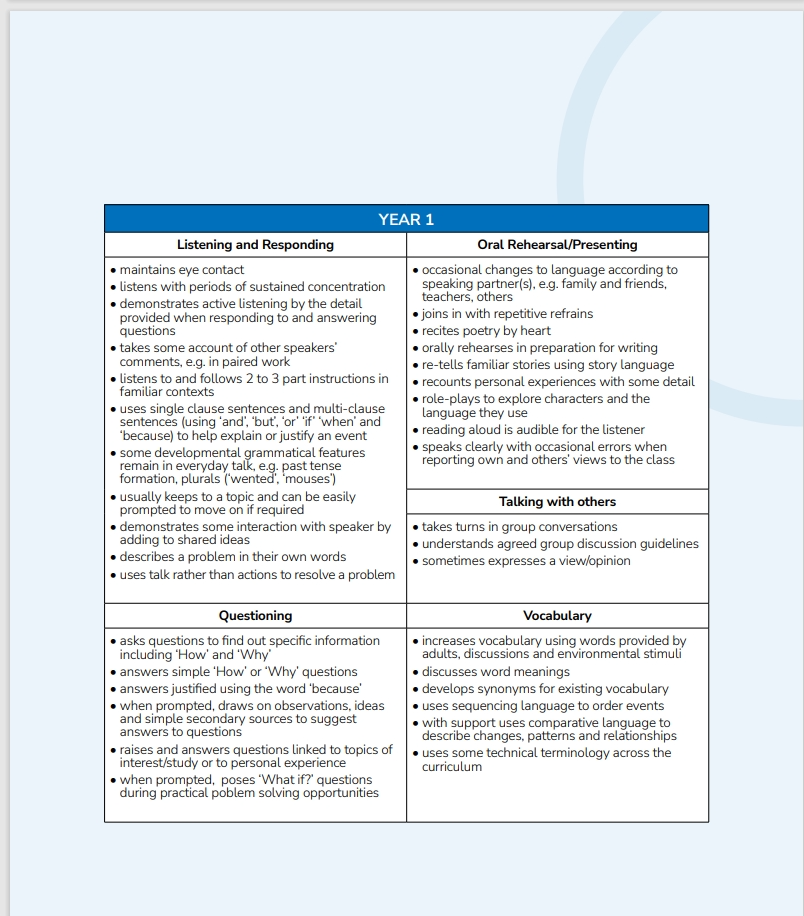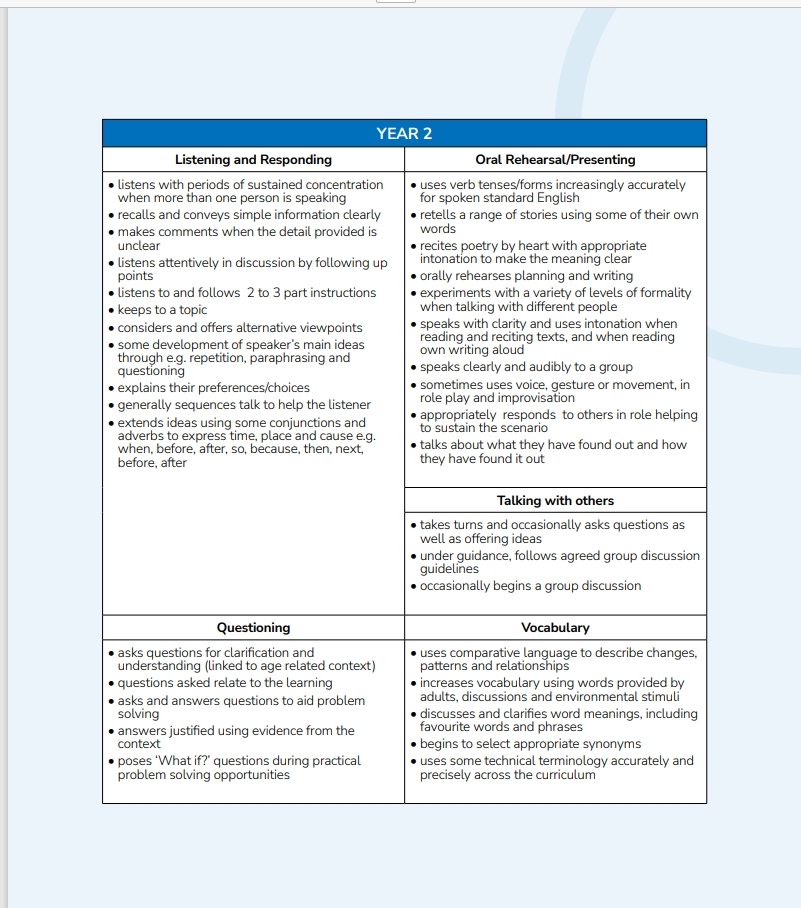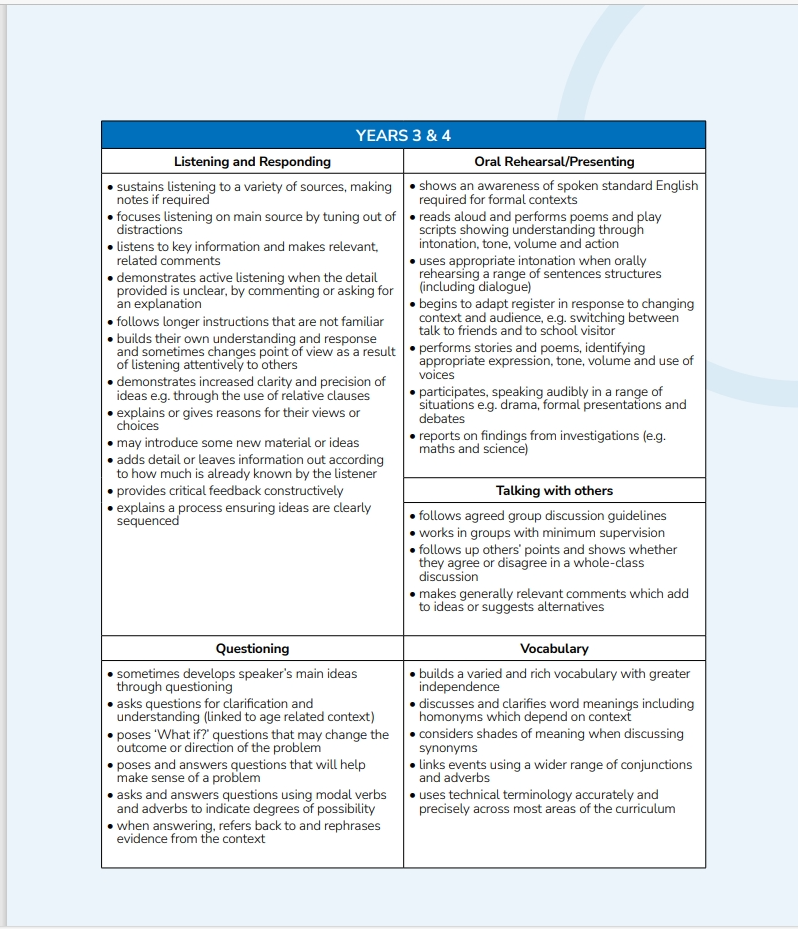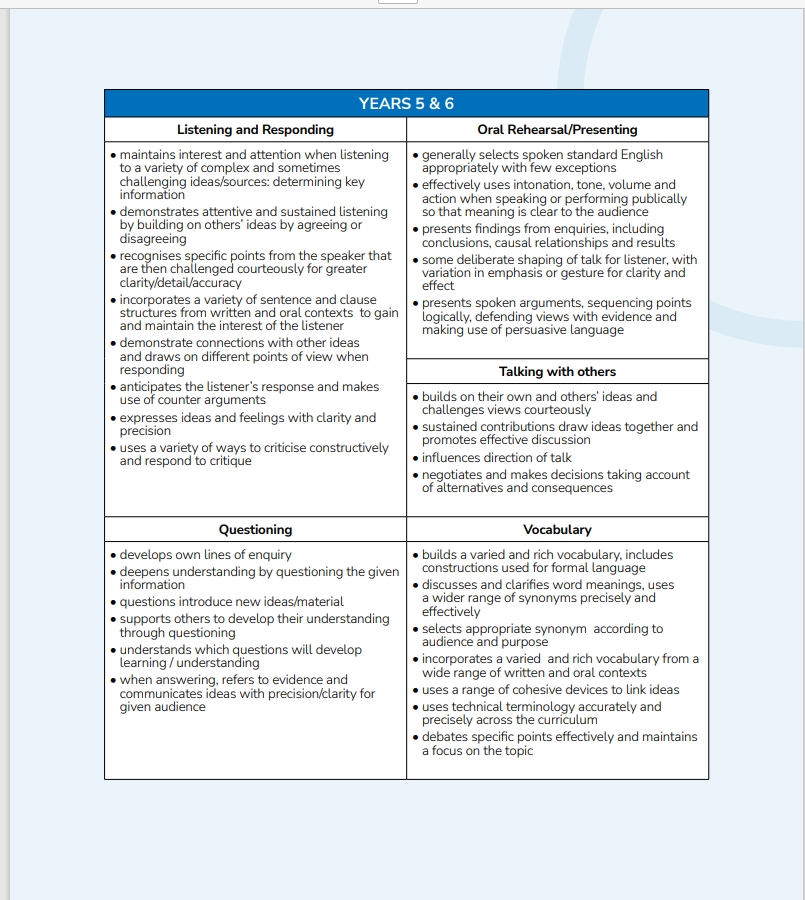Oracy
Oracy is the ability to articulate ideas, develop understanding and engage with others through spoken language. In school, oracy is a powerful tool for learning; by teaching children to become more effective speakers and listeners we empower them to better understand themselves, each other and the world around them.
At St Anthony’s, everyone is respected, included and each voice is valued. We will support every member of our school to have the confidence and emotional intelligence to communicate effectively, build positive relationships and prepare for their next steps in life.
Not only do we feel it is important to teach children to learn to talk, we also believe that children learn most effectively through talk. We encourage talk in all our lessons to allow children to collaboratively discuss ideas, thoughts and judgements. Children take responsibility for their own learning through talk and discover new information in pairs, trios, circles, and a variety of other groupings. Oracy is at the forefront of learning from Early Years right through to Year 6, with the ability to talk and be heard being of the utmost importance.
Oracy in Early Years
Environment:
– Role play areas
= with toys, visual prompts and signs to fully engage narrative play.
– Small world areas
= with animals sorted by continent/country, fabrics/plants/logs to create different lands
– Book corners
= with puppets and toys to retell stories
= listening posts
= phonics materials
= class registers
= popular logos, signs and brands
= magazines
= favourite books and themed books
= class journals and RE journals in book corners for children to look back on their learning. Teachers look at books regularly with them.
= Vipers books filled out by teacher, with answers from children, throughout the year.
= Books and toys are representative of a variety of cultures.
– Photos up of each child’s family in classroom, and mini me dolls to play with.
Within lessons:
– Planned for in our Curriculum ambitions.
– Literacy is themed around a book a week/every fortnight – this is repeatedly revisited so that the children become familiar with the text and can retell it/join in themselves.
– Each Literacy unit has a hook to draw children in and encourage them to explore, question and predict.
– Different techniques are used within lessons including story sequencing, hot seating, predicting, drama, booklet making
– Learning is based around a theme so that the children can really get to grips with that theme’s vocabulary
– Vocabulary and information about the week’s learning is sent home to parents.
– Sound mats available to help when writing
– Planned for fortnightly music lessons with performance opportunities planned in.
– Read, Write, Inc scheme supports a clear progression from reading sounds, to reading words to reading sentences, and likewise with writing.
Throughout our learning:
– Play! Play! And more Play!
– Nursery rhyme time at the end of every day in Nursery
– Familiar songs played throughout the day to embed Maths, Literacy, Understanding the world. A page on the EYFS website shares all of these with parents.
– Story time at the end of every day
– My turn, your turn and talk partners used regularly
– Reading Bears and Nursery Bears sent home each week for the children to look after, with a diary to share the week’s events.
– Phonics, Maths and Communication games sent home once a week for targeted children.
– Children visit the EYFS library once a week to take home a book.
– Reception take home two phonics books each week.
– Phonics meetings held for parents and videos sent home each week for parents and children to watch together.
– Adults encourage children to use their words – either modelling simple phrases for children with limited English, or pushing more able children to develop their language further.
– Visual clues and gesture used as much as possible to aid understanding.
– Classrooms and resources are labelled.
– Shared worship – often carried out in a circle, with a chance for all the children to contribute.
– Home languages used at different times throughout the day e.g. when welcoming the children, the register or saying goodbye.
Interventions:
– Attention Autism Bucket – to help children focus and engage with their learning.
– Communication Circle – to develop conversational language skills.
– Nursery language intervention – A Twinkl scheme to develop familiar language e.g. body parts, family.
– Reception language intervention – NELI scheme to develop familiar language e.g. body parts, family etc… and to develop an understanding of narrative and story telling.
– Read, Write, Inc 1:1 tuition to develop early reading skills.
Events:
– Reception hold a sharing assembly to share with parents all they have learnt.
– Nursery hold a graduation.
– Reception and Nursery perform in the EYFS Christmas play – with speaking parts for Reception.
– School trips tied in with a theme, to further embed learning and language.
– Visits from older classes – e.g. Y6 visit Nursery, visits from children and staff during National Story Telling Week and World Book Day, Y4 visit reception to share their moving books, Y6 visit Reception for a teddy bears picnic.
– Hymn practise once a week with hymns shares on the EYFS page on the website and a hymn booklet sent home with each child.
– Well done assembly once a week.
Oracy in Key Stage One
In Key Stage One, we have worked as a team to ensure that oracy is at the forefront of our minds when planning our lessons, setting up our classroom environments, and in the general day to day running of the school day. We understand that oracy is a priority at all stages of education – so that every young person leaves school with the confidence and skills to use their voice to overcome barriers and make the most of their lives.
Expectations in Year 1
Expectations in Year 2
Things we do in Key Stage One to embed oracy:
· Continuous provision in Year 1 – we carefully plan our continuous provision to allow a smooth transition from EYFS to KS1, taking into account any gaps children may have from the EYFSP, as well as ensuring resources and acitvities are planned that help the children to build on skills to achieve National Curriuculum objectives. This allows children to not only interact with the adults in the classroom, but their peers as well. They learn about sharing, asking questions, listening to each other, solving conflicts and working as a team with children they may not have interacted with if it were outside at playtime.
· Spotlight children are identified and the teaching staff and teaching assisstants target these pupils inside and outside of the classroom to model speach, question further and build upon their existing language. Some of these children take part in various language interventions. (See below for more information)
· Oracy is carefully thought about when planning lessons and is encorporated across the curriculum. Key vocabulary is shared and revisited, displayed and used in the classroom on a regular basis.
· Time is given for communication partners where teachers have high standards of how children are talking with and listening to each other. We aim to have children active and engaged at all parts of the lesson, including when they are sitting on the carpet.
· Teachers take opportunities for all children to participate in hot seating, drama/role play activities in a variety of subjects.
· Practical and group work acitvities are often planned to encourage talk across the curriculum.
· Children are taught how to orally reherse sentences before writing down their ideas using speaking frames and modelling.
· Teachers invite children to share ideas or written work by standing at the front of the class to speak/read out their work.
· Story time takes place every day before the children go home. The class discuss the story – What do you think this will be about? What will happen to this character? Why do you think they feel like that?
· Children verbally review their work with a partner or a teacher. They talk about what they like about the work/what they could improve and why.
· Children attend 2 weekly assemblies, one run by the head teacher and the other run by the KS1 lead to celebrate learning that week.
Interventions:
– NELI: Nuffield Health Speech and Language Scheme run by Georgina in Year 1 and Year 2. This is aimed at children with EAL.
– Welcom Intervention run by Eleay on a Wednesday afternoon for Year 1 and Year 2. This is aimed at children who have been identified with poor communication skills.
– Communication Circle run by Laura in Year 1, and Manu and Irekshika in Year 2. This is aimed at children identified with poor communication and aims to promote speaking and listening skills.
– One-to-one phonics tutoring. Focuses on sound gaps identified, run by class TAs 3x weekly.
– Brick therapy ran by Georgina. This has one focus child who needs support with communication and language.
– Bucket time – Ran by Laura in Year 1 and Manu and Ireshika in Year 2. This is mainly aimed at children with an Autism diagnosis to encourage turn taking, listening and attention skills.
Oracy in Key Stage 2
Expectations in Year 3 and 4
Expectations in Year 5 and 6



